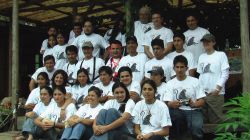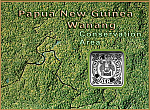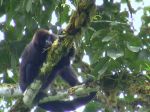Endangered species research - science to underpin conservation
In one of the world's biodiversity hotspots (The Ecuadorian Choco Rainforest) we are developing innovative methods to survey and monitor endangered species. The major focus is on the critically endangered brown-headed spider monkey, Ateles fusciceps (funded by the Darwin Initiative). We have established the 2000 hectare Tesoro Escondido Reserve in NW Ecuador using a parabiologist model that combines research with community-based conservation.
Current work includes;
- Developing an agent-based model to identify risks to primates from hunting and logging
- Using 'soundscape' to determine the health of forest systems
- Investigating the role of birds as bioindicators of habitat quality and environmental change
- Participatory processes and parabiologists in defining a new conservation priority area for the critically endangered brown-headed spider monkey (Ateles fusciceps)

None of the work could take place without engaging with our network of 'parabiologists' (members of forest communities trained in scientific collection techniques). Community members were trained throughout the forests of NW Ecuador during the Darwin Initiative PRIMENET Project. Our students engage with communtiy level biologists, taking advantage of their depth of forest knowledge and create a bridge between local and scientific knowledge. One cohort of parabiologists trained through the PRIMENET project is shown to the left.
Sustainable livelihoods - a new model for science as business in Papua New Guinea (Darwin Initiative)
 Building on over 10 years of work with Professor Vojtech Novotny and the Binatang Research Center in Papua New Guinea we are now working on how best to develop sustainable livelihoods for remote rainforest communities that are faced with a choice between forest conservation and logging concessions by building capacity (infrastructure, management expertise and para-ecologist teams) for internationally-networked biodiversity research. Our work in Papua New Guinea has been generously funded by the UK Darwin Initiative.
Building on over 10 years of work with Professor Vojtech Novotny and the Binatang Research Center in Papua New Guinea we are now working on how best to develop sustainable livelihoods for remote rainforest communities that are faced with a choice between forest conservation and logging concessions by building capacity (infrastructure, management expertise and para-ecologist teams) for internationally-networked biodiversity research. Our work in Papua New Guinea has been generously funded by the UK Darwin Initiative.
Soundscape
To address the challenges of assessing biodiversity in tropical forests and marine environments, particularly coral reefs, we are currently investigating the potential of information generated by 'soundscapes' in tropical and temperarate forests. Soundscapes include biophony (sounds generated by wildlife), geophony (sounds generated by abiotic factors - wind, rain) and anthrophony (human generated sounds). Understanding soundscape and soundscape ecology is an emerging field with potential for remote sensing of biological processess and ecological communities. Our aim is to contribute to development of remote soundscape sensors that could be deployed over large spatial, and long temporal, scales to provide cost-effective, long-term biodiversity monitoring.


